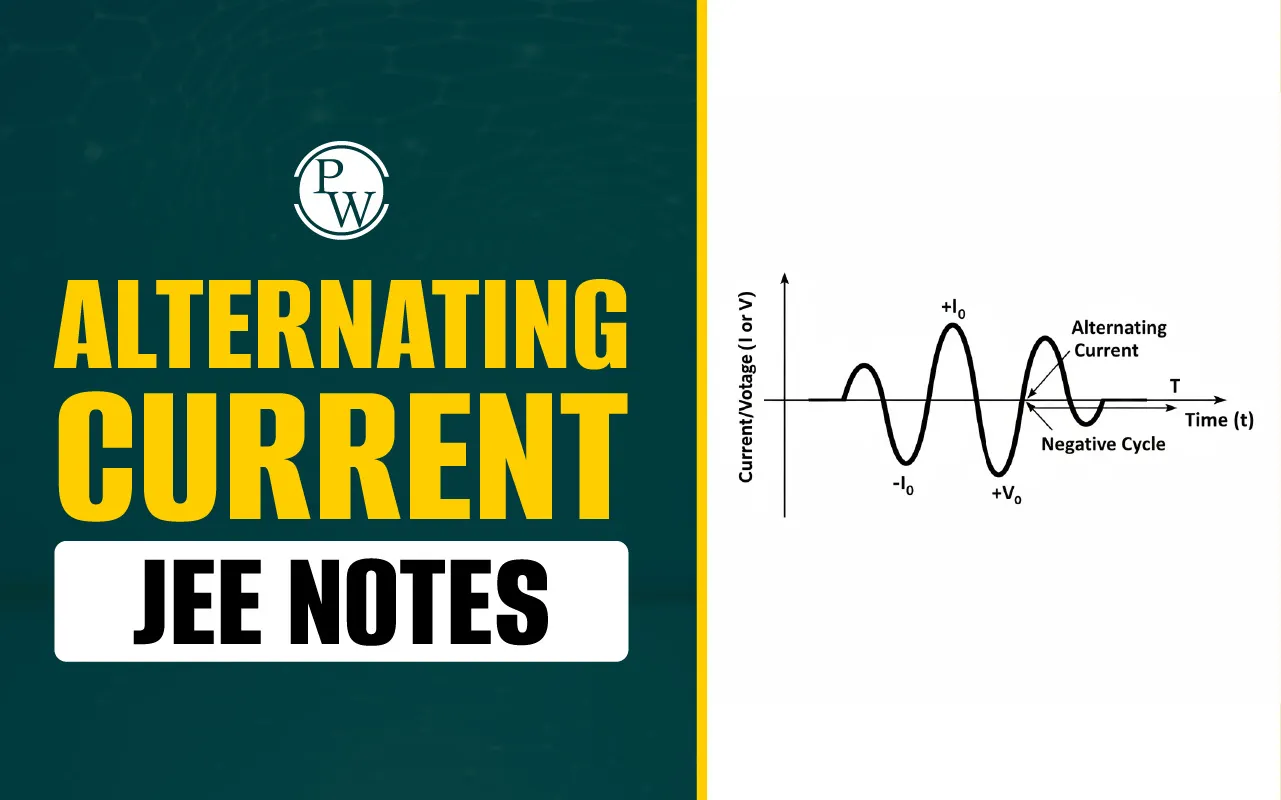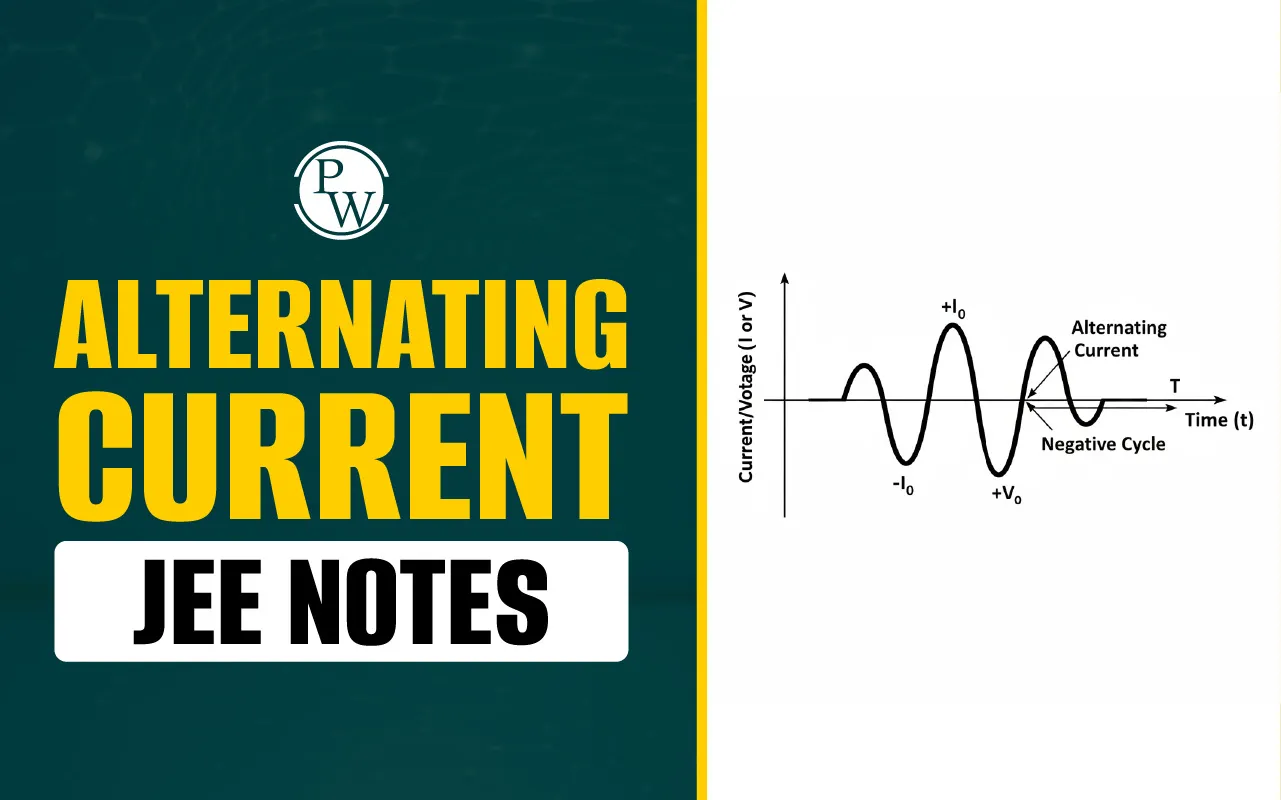

Alternating Current: Electric current can flow in two main forms, i.e., Direct Current (DC) and Alternating Current (AC). DC flows only in one direction, but AC changes its direction and magnitude periodically with time. The electricity supplied to homes and industries is AC because it is easier to generate, transmit, and convert into different voltage levels using transformers.
The Alternating Current (AC) system was developed to overcome the limitations of DC, especially for long-distance transmission. In India, the AC supply frequency is 50 Hz. This means that the current changes direction 100 times per second. NEET aspirants need to understand the principles of AC as it is a crucial topic for the exam.
What is Alternating Current (AC)?
Alternating Current (AC) is defined as an electric current that periodically reverses its direction and changes its magnitude with time. The voltage that produces this current also varies in the same way. The instantaneous values of current and voltage are represented as:
Where:
A single complete change of current direction is called a cycle. The time taken to complete one cycle is the time period (T), and the number of cycles per second is called the frequency (f = 1/T).
Also Check: Alternating Current NEET Notes
Alternating Current and Voltage
Alternating current and voltage vary and can be represented by sine waves. The positive half of the wave represents current flow in one direction, and the negative half represents flow in the opposite direction.
Important terms include:
-
A cycle is one complete set of positive and negative variations.
-
Frequency (f) is the number of cycles per second.
-
Amplitude (I₀ or V₀) is the maximum value reached by current or voltage.
-
Phase tells how much one waveform leads or lags behind another.
In an electrical circuit, voltage and current may not always be in phase. For example, in a resistor circuit, they are in phase, but in an inductor or capacitor circuit, they can be out of phase by 90°.
Also Check: Alternating Current MCQs
RMS Value and Average Value
Since the instantaneous value of AC changes every moment, its effective strength is measured using the RMS Value and Average Value.
The average value over a complete cycle is zero, but the average over one half cycle is given by:
The RMS value of alternating current is equal to the value of direct current that produces the same heating effect in a resistor:
RMS values are widely used in practical measurements of AC.
AC Through a Resistor Circuit
When AC through a resistor circuit, the current and voltage remain in the same phase. This means both reach their maximum and minimum values simultaneously.
In this case, all electrical energy converts into heat according to Joule’s law, just like in a DC circuit.
AC Through Inductor Circuit
An inductor opposes the change in current through it due to self-induction. When AC through inductor circuit, the current lags behind the voltage by 90°.
The opposition offered by an inductor is known as Inductive Reactance (X_L):
-
Phase difference: Current lags voltage by 90°.
-
Power consumed: Zero on average over one cycle, since energy is alternately stored and released by the magnetic field.
Example: Ceiling fans, transformers, and motors all have inductive components that affect the current phase.
AC Through Capacitor Circuit
A capacitor stores charge on its plates and opposes the change in voltage. When AC passes through a capacitor circuit, the current leads the voltage by 90°.
The opposition to AC by a capacitor is called Capacitive Reactance (X_C):
LCR Series Circuit and Resonance
An LCR circuit consists of an inductor (L), a capacitor (C), and a resistor (R) in series with an AC source. LCR series circuit and resonance are shown as:
The phase angle (ϕ) between voltage and current is:
At Resonance:
Applications:
-
Used in radio, TV tuners, and filters to select specific frequencies.
-
Important in communication circuits for signal tuning.
Power Factor and Wattless Current
The power factor of an AC circuit indicates how effectively electrical power is converted into useful work. Here’s how power factor and wattless current is shown:
Types of Power:
When voltage and current differ by 90°, cosϕ=0, and no real power is consumed. This is called wattless current. A high power factor (close to 1) indicates efficient power use, as seen in well-designed industrial circuits.
Also Check: Alternating Current NEET Mindmaps
Transformer Principle and Efficiency
A transformer is an electrical device that transfers AC energy between two circuits without electrical contact, using electromagnetic induction.
where:
Types:
-
Step-Up Transformer: Increases voltage, decreases current.
-
Step-Down Transformer: Decreases voltage, increases current.
Efficiency:
An ideal transformer has 100% efficiency, though practically it’s around 95–98%. Transformers are used in power stations and distribution networks worldwide.
Also Check: Alternating Current Formulas
LC Oscillations and Energy
An LC circuit is formed when a charged capacitor is connected to an inductor. The energy oscillates between the capacitor’s electric field and the inductor’s magnetic field and forms LC oscillations. LC oscillations and energy is shown as:

Choke Coil and Applications
A choke coil is an inductor used to reduce AC current without energy loss. When AC flows through it, the coil’s inductive reactance opposes the current flow.
Choke Coil and Applications:
-
Used in fluorescent lamps to regulate current.
-
Employed in power supplies to smooth out fluctuations.
-
Acts as a filter in radio and TV circuits to separate frequencies.
It saves power compared to a resistor because no energy is lost as heat.
Also Check:
- NEET Exam Pattern 2026
- NEET 2026 Admit Card
- NEET Eligibility Criteria 2026
- NEET 2026 Exam Centres
- NEET Candidate Login 2026
Key Theorems and Formulas in Alternating Current
It is important for students to understand the AC. Below are the most important formulas and theorems used in AC theory:
